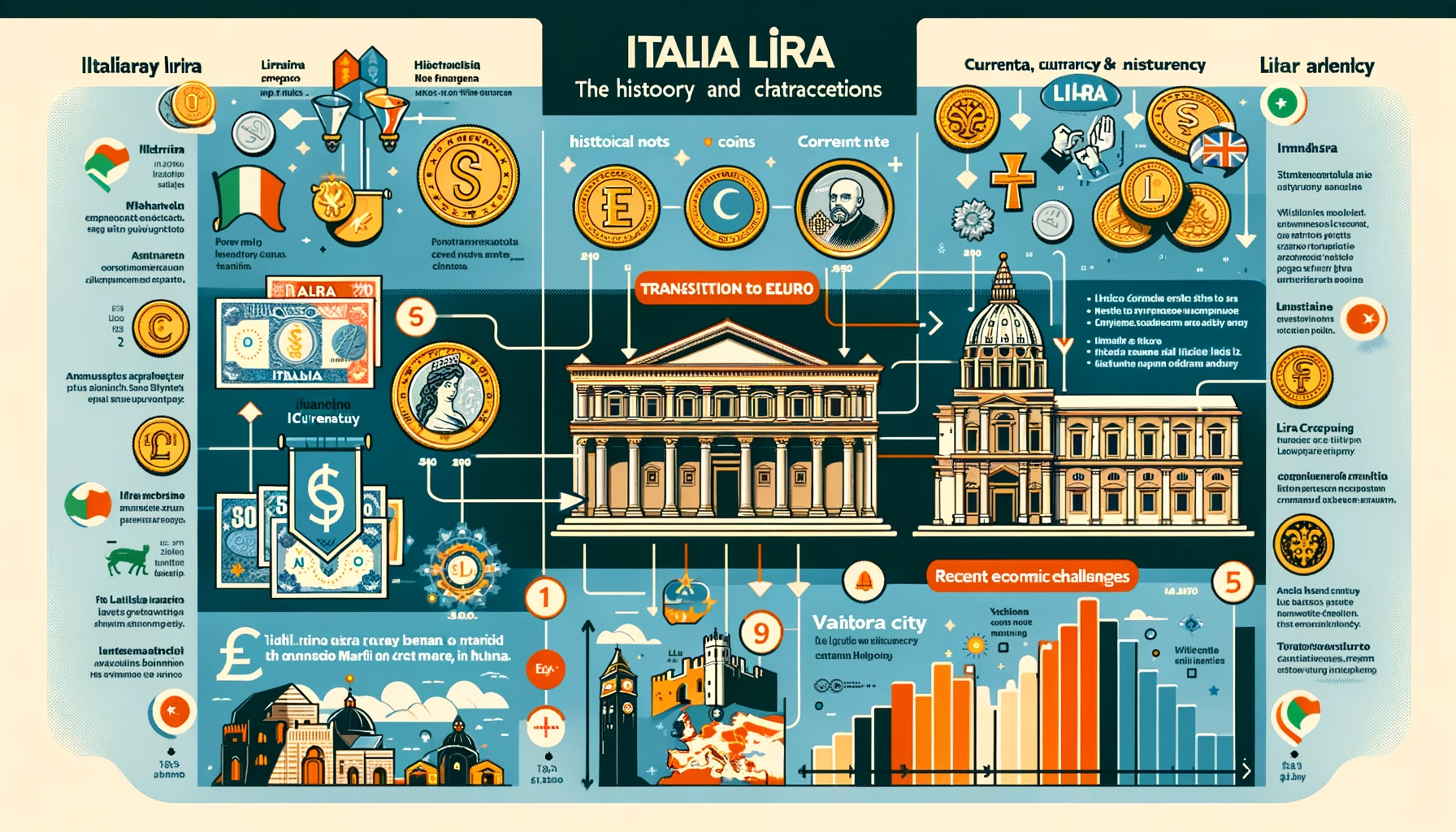What is a Lira? Understanding the Currency of Italy and Turkey
The term “lira” is a historic and widely recognized currency name that has been used in several countries, most notably Italy and Turkey. The lira has a fascinating history, from its origins in ancient Europe to its role in the economies of Italy, Turkey, and other countries. This blog post will cover what a lira is, its history, variations across countries, and its modern-day significance.
1. What is a Lira?
The lira is a term for currency that has historically been used in various countries, derived from the Latin word “libra,” meaning “pound.” The term refers to a unit of currency that was originally based on the weight of silver or gold. Over time, different countries adopted the lira as their official currency, each one adapting the currency to fit their own economy and financial systems.
2. The Italian Lira (ITL)
One of the most well-known versions of the lira was the Italian lira, which was Italy’s official currency for centuries. Introduced in the 19th century, the Italian lira served as Italy’s currency until 2002, when the euro was adopted.
History of the Italian Lira
- Origins: The Italian lira was officially introduced in 1861 after the unification of Italy, aiming to establish a standard currency across the new nation.
- Decimalization: The lira was divided into 100 centesimi, with the Italian government issuing both coins and banknotes.
- Gold Standard: Initially, the Italian lira was backed by the gold standard, but this was abandoned in the 20th century due to economic challenges.
Transition to the Euro
In 2002, Italy adopted the euro (EUR) as its official currency, and the lira was gradually phased out. Italians were able to exchange their lira notes and coins for euros at a set exchange rate until the Italian lira became fully obsolete.
Italian Lira Coins and Notes
The Italian lira featured a range of banknotes and coins over the years, each reflecting Italian culture, history, and famous figures such as Leonardo da Vinci and Dante Alighieri. Some lira coins and notes have become collector’s items due to their historic value.
3. The Turkish Lira (TRY)
The Turkish lira is the official currency of Turkey and the Turkish Republic of Northern Cyprus. Although it shares the same name as the Italian lira, it has its own unique history and characteristics.
History of the Turkish Lira
- Establishment: The Turkish lira was introduced in 1923 after the establishment of the Republic of Turkey, replacing the Ottoman Empire’s currency.
- High Inflation: The Turkish lira experienced significant inflation, especially in the late 20th century, leading to several redenominations and reforms.
Redenomination and the New Turkish Lira
In 2005, Turkey undertook a redenomination process to combat inflation, introducing the “new Turkish lira” (YTL), where one new lira was equivalent to 1 million old liras. In 2009, the “new” designation was dropped, and the currency reverted to being called the Turkish lira (TRY).
Turkish Lira Coins and Notes
Today, the Turkish lira is available in a variety of coins and banknotes, with designs featuring Turkey’s cultural heritage and historical figures, most notably Mustafa Kemal Atatürk, the founder of modern Turkey, whose portrait is featured on all banknotes.
4. Other Uses of the Lira in History
Several other countries and territories have also used the term “lira” for their currencies:
- San Marino: The Italian lira was also used as the official currency in San Marino until the adoption of the euro.
- Vatican City: Vatican City used the lira alongside Italy until it also transitioned to the euro.
- Malta: Malta’s currency was known as the Maltese lira until 2008, when it switched to the euro.
5. The Modern-Day Turkish Lira
The Turkish lira remains an active currency today, used primarily in Turkey and the Turkish Republic of Northern Cyprus. It is available in denominations of 5, 10, 20, 50, 100, and 200 lira banknotes, and smaller values are issued in coins.
Economic Challenges
The Turkish lira has faced significant economic challenges in recent years, marked by high inflation, devaluation, and volatility. Despite government interventions and monetary policies aimed at stabilizing the currency, the lira’s value has fluctuated, impacting Turkey’s economy and the purchasing power of Turkish citizens.
Exchange Rate Fluctuations
The Turkish lira is often subject to exchange rate fluctuations due to factors such as inflation, political uncertainty, and changes in global markets. As a result, its value relative to stronger currencies like the US dollar or euro can vary significantly.
6. Comparing the Lira to Other Currencies
Both the Italian lira (prior to the euro) and the Turkish lira have had distinct characteristics and historical contexts compared to other major currencies:
- Inflation and Stability: Both the Italian and Turkish lira have faced inflation issues. Italy’s economy stabilized with the introduction of the euro, while Turkey continues to face inflationary challenges with its lira.
- Cultural Significance: The lira holds cultural importance in both countries. Italian lira banknotes and coins often celebrated Italy’s rich history and artistic heritage, while the Turkish lira symbolizes Turkey’s modern identity, prominently featuring Mustafa Kemal Atatürk.
7. Collecting Lira Currency
Since the Italian lira is no longer in circulation, some of its banknotes and coins have become collectibles, especially rare and old denominations. Collectors often seek Italian lira coins and notes due to their historical significance and the artistry of their designs. Similarly, older Turkish lira coins and pre-redenomination notes can also be found in collections.
Value of Collectible Lira
The value of collectible lira can vary widely depending on the rarity, condition, and historical importance of the specific coin or banknote. Collectors may find coins from the Italian Renaissance period or early Turkish Republic notes particularly valuable.
8. Key Takeaways
- Italian Lira: The Italian lira was Italy’s official currency until 2002, when the euro was adopted. It holds historical and cultural significance and is now sought after by collectors.
- Turkish Lira: The Turkish lira remains the official currency of Turkey. Despite facing inflationary challenges, it continues to play a central role in Turkey’s economy.
- Historical Legacy: Both currencies have a rich history that reflects the cultural and economic evolution of Italy and Turkey, marking important milestones in each country’s financial heritage.
Conclusion
The lira has served as an important currency in several countries, most notably Italy and Turkey. While the Italian lira was phased out with the introduction of the euro, the Turkish lira remains active despite economic challenges. Whether you’re a currency collector or simply interested in global finance, the story of the lira is a fascinating journey through time, culture, and economic history.






